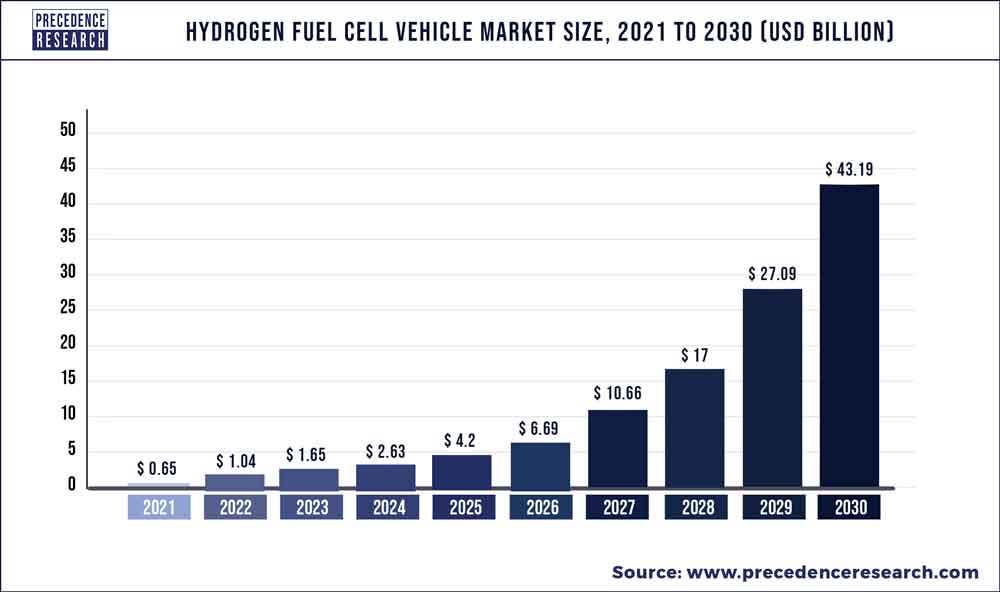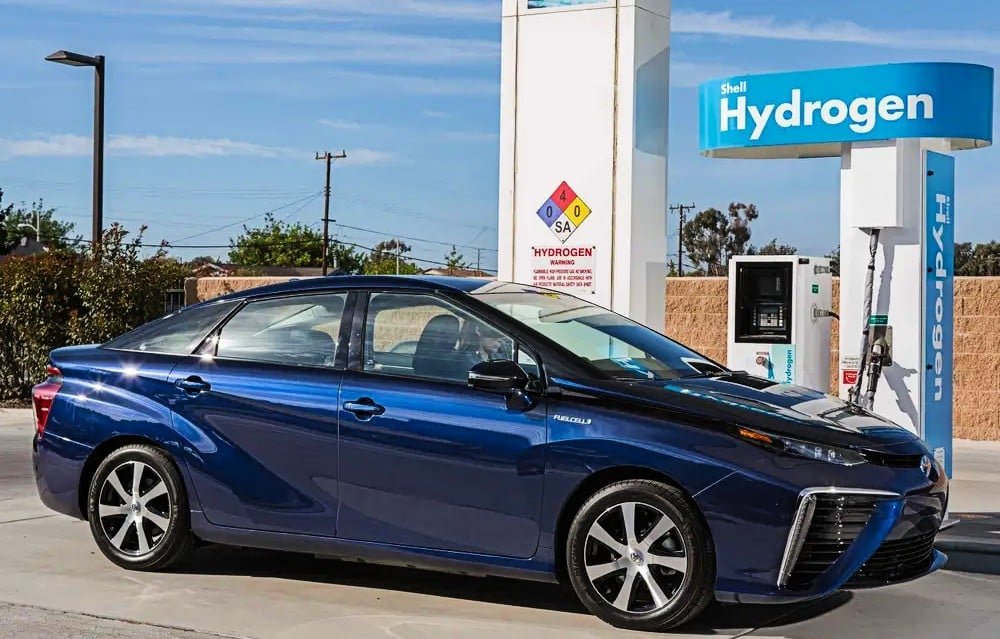Toyota announced that it will focus on rolling out hydrogen-powered vehicles in Europe and China with the aim of selling 200,000 units by 2030.
This move is a shift in Toyota’s focus, which revealed its plans to commercialize its revolutionary solid-state battery by 2027.
Toyota’s Hydrogen Fuel-Cell vs. Solid-State Battery
The Japanese carmaker unveiled last month that they’re determined to be a world leader in battery EV energy consumption. And then they presented their solid-state battery breakthrough just last week. This announcement stole the show as the company gave a sneak peek into its next-gen battery technology.
But Toyota’s latest plan on selling hydrogen fuel-cell vehicles outside its home market is yet another revelation.
The largest carmaker by sales has long placed a huge bet on hydrogen fuel cells as an alternative to fossil fuels. A fuel cell vehicle is also using an electric motor like an EV but it gets power from a fuel stack where hydrogen is stored.
However, Toyota sales of its hydrogen-powered vehicles weren’t a big hit. Since it launched its fuel-cell Mirai in 2014, the company has only sold less than 22,000 hydrogen cars.
The automaker also sold only over 3,900 fuel cell vehicles in 2022, which is so insignificant in relation to its 9.5 million vehicles in global sales. That’s mainly because of the expensive cost of hydrogen and the lack of infrastructure, particularly the hydrogen fueling stations.
So to bring down the costs of fuel-cell vehicles, Toyota will focus on Europe and China markets where hydrogen demand and production is much higher than Japan. By selling more volume, it can cut down costs by almost half, the company said.
Europe and the US have plans to supply 25 million tons of hydrogen annually by the end of the decade. China aims to produce much more, 40 million tons while Japan targets only 3 million tons by 2030.
Fuel Cells Better for Heavy-Use Vehicles
Transitioning to clean energy calls for greener power sources and hydrogen is dubbed as the energy of the future. But this happens if trillions of dollars – $15 trillion – are invested into this green technology by 2050.
Government subsidy programs announced this year will help ensure that the hydrogen industry will become a large-scale renewable power source.
While Toyota seeks to increase sales of its fuel cell vehicles outside Japan, the giant carmaker can still work with the Japanese government which highly considers hydrogen as an energy-security alternative. The company can supply local governments fuel cell ambulances, delivery and garbage trucks.
Toyota says fuel cells are better for longer-range, heavy-use vehicles because of their higher energy density. They predict that the global market for fuel cells will increase 15x from 2020 levels to $35 billion by 2030.
Other market estimates are much higher at more than $43 billion by the same year.

They will help Toyota forge more partnerships on hydrogen technology such as its deal with Daimler Truck Holding to merge their truck businesses. Other automakers also plan to sell tens of thousands of hydrogen-powered transports.
Honda Motor aims annual sales of 60,000 fuel cell vehicles in collaboration with General Motors in 2030.
For Toyota, its decades-old knowledge in developing fuel cell technology is an edge but it can’t ignore China’s big potential for producing hydrogen-powered vehicles, too.
Still, tapping opportunities abroad brings confidence to the company as asserted by its Chief Technology Officer, Hiroki Nakajima, remarking that:
“This may be a strange way of putting it, but 200,000 is not a big number… We believe this number and more can be achieved.”

